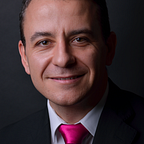The 3 steps to personal alignment : clarify mission (heartset), create vision (mindset), execute strategy (bodyset)
Any stool needs at least three legs.
What emerges when you alchemically combine motivation, vision, and strategy?
An aligned stool.
Life’s stool.
I used to sit on this kind of three-legged stools when I was young. My grandparents had these and we would all sit on them, gathered around a round table. The stools were also round, lowered, small, and nicely hand-carved from wood, with a recess that perfectly encompassed the shape of my bottom :) They seemed more organic, more in tune with me and nature around.
First leg: Executing a strategy follows a clear “why” and “what for”. Any strategy is a “how-to”, a practice of behaviors and implementing actions leading to the desired result (vision) based on a specific motivation (“why”).
Second leg: Creating a vision is a matter of imagining a kind of future different from what the present has to offer. A vision is a departure from the present due to some “pains” or “desires”.
Third leg. Clarifying the mission means to connect to one’s most powerful inner creative force — this might be a trauma, a phobia, an emotional unbalance, a strive, an ambition, a positive intent — anything. We express our drives in many ways, and some of these ways may be experienced negatively by others. Still, in their intrinsic nature, all the motivations are legit and all-equal.
Why are all three important?
Strategy without start and endpoints is just meandering, wasting energy and efforts. I encountered coaching clients who were in desperate need of a direction and of understanding how to harness the extraordinary power of their inner drive, but they were caught very deep in the day-to-day execution of different tasks.
Vision without a mission and a strategy is just dreaming; plain simple.
A mission without vision is a mission without a cause.
Mission and vision without strategy are usually associated with a constant balance between what drives one and what would suffice this drive — but no action. Somehow, the thinking of an ideal self or future makes some of us consider it done, and no action happens. But then reality strikes back, and the future does not prove to be how we imagined before. The return to the drive reappears, we imagine a new future, and so on.
Why is their order important: mission — vision — strategy?
If you start with the strategy (set of actions), you get lost in it and forget why you started in the first place and where you go.
Starting with the vision it is usually not substantiated by a specific, well-directed drive. It is as if you want a flower but without growing it, watering it, taking care of it for several weeks.
Starting with the mission and continuing with the strategy without considering a vision, is similar to feeling the need to drive (mission), taking the car (strategy) but having no destination. Therefore, you may end up anywhere (even in places you do not like).
Conclusion
- Clarify your “why”: why do you exist, why do you appreciate being alive, why do you work, love, why are you afraid of death, why do you care about anything. Clarifying presupposes inner work, self-questioning, pondering answers to these questions, noticing others, relating to your past experiences, mentors, role models, parents. The “why” is emotional, visceral and instinctual. Your your emotions.
- Set the vision, the what for: where do you want to go, how do you want to spend your last days, where you see yourself at an old age, what is after work for you, what’s a typical day for you in your 70's? Seeing the vision requires an active process of creation, imagining. It should not be a deduction process based on your past or present but a bold construction. The vision is imaginative, rational, logical, creative, left and right brain altogether. Use your head.
- Act: implementing your strategy is taking care of the “now”, using the resources you have to do something on the way to your vision, driven by your mission. Acting is a matter of even the smallest steps — but conscious ones. To act unconsciously is the easiest one can do. To start acting purposefully and intently tomorrow, as a deviation from the current stream of unconscious day-to-day acting is a matter of #actionableawareness. The strategy is based on your movements, actions and behaviours. Use your body.
Outro
A disclaimer is needed. Vision may change in time. A mission may change in time. The strategy needs to change with time. You need to be on a constant quest of understanding yourself better (mission, drives, needs), of creating expectations from yourself and be at peace to change them anytime (vision, wants, fulfillment), and of acting now. One can control only his thoughts and his actions — not emotions, not others, not circumstances, not the weather, not the past, not the future. So, act now gently, filled with your most precious drive and with a light view over a future that you want.
